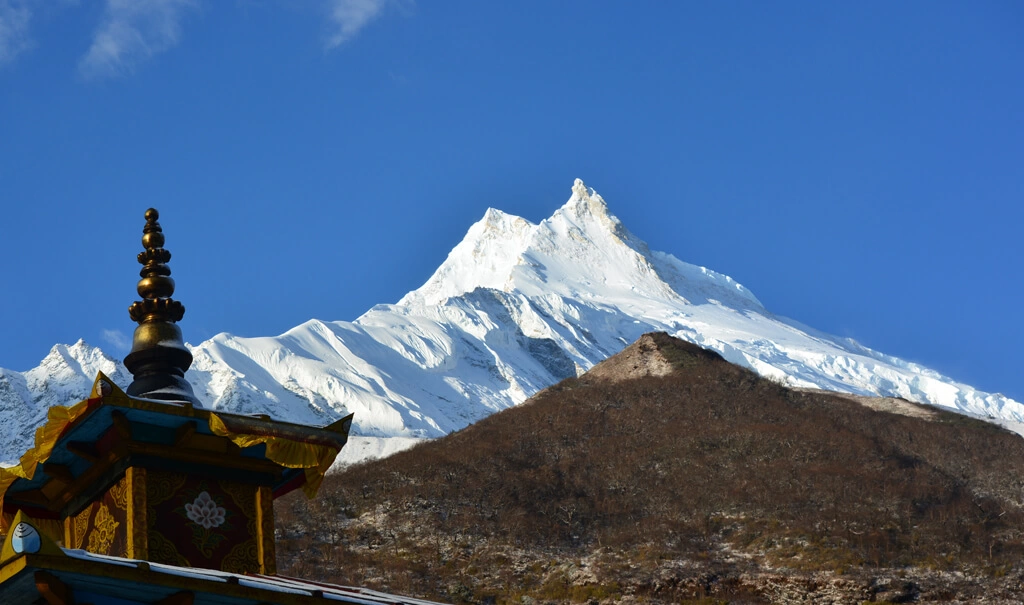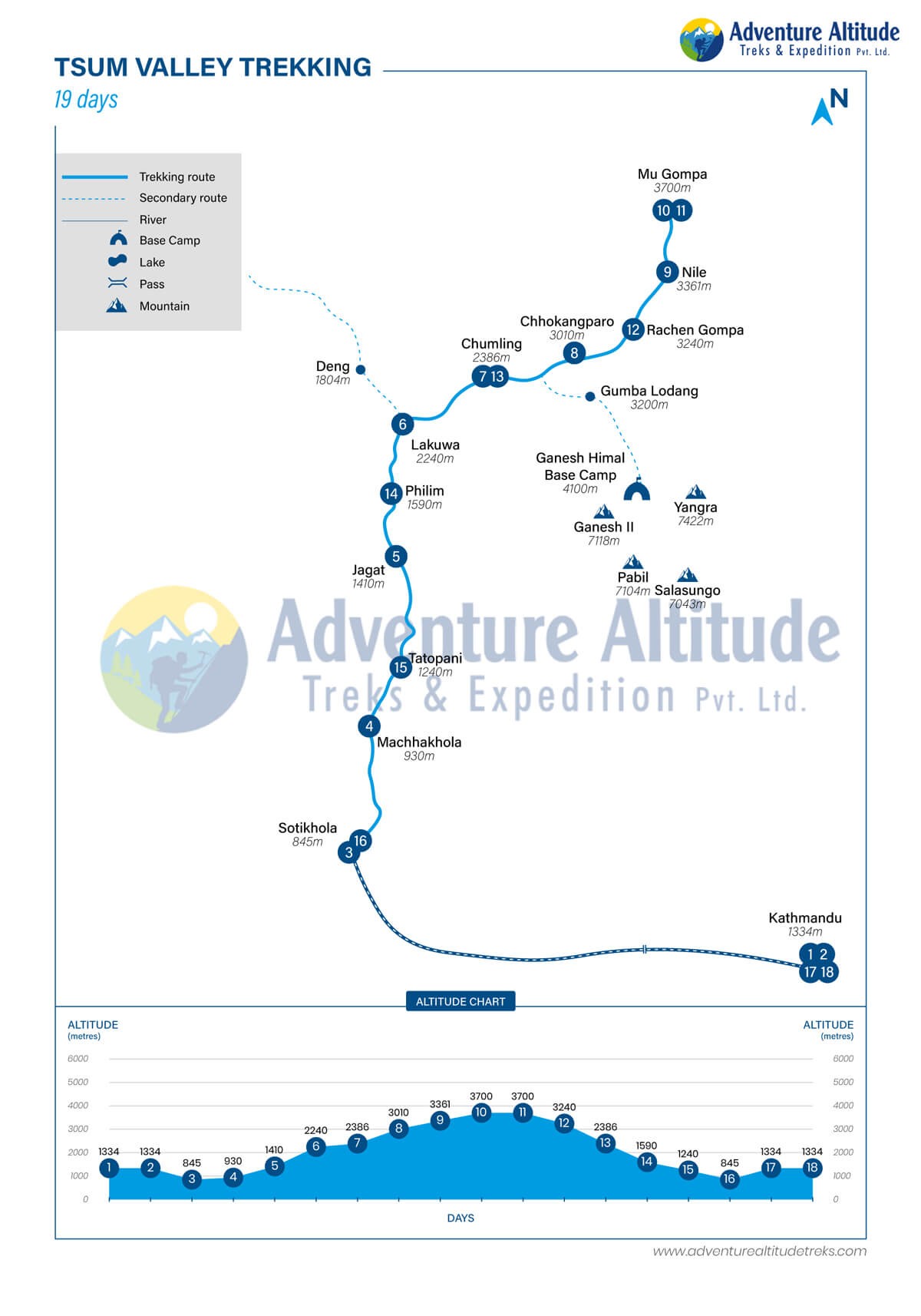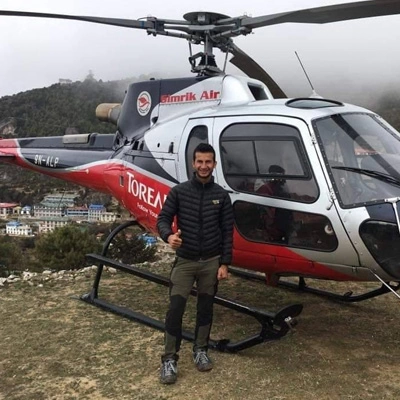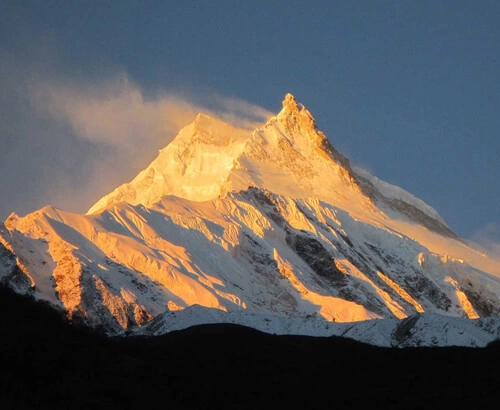Tsum Valley Trekking is a magnificent journey into a remote and isolated country beyond Nepal's North Mid-West Himalayas. Sandwiched between a great range of mountains of Manaslu and Ganesh Himal, Tsum is known as the Valley of Happiness in the local native language of Tibetan origin. This is a fascinating adventure that leads you into hidden areas and Shangri-la of the Himalayas away from the maddening crowd of modern civilization into the pristine wilderness of mountains-windswept beautiful country with the impressive local culture of Tsum valley. A perfect adventure destination for people who are bored walking on mainstream trekking trails on popular routes, this trip allows you to be in complete tranquility in the harmony of interesting colorful culture and ancient traditions as it was past hundreds of centuries.
Tsum Valley Trekking commences with an interesting overland journey into Nepal's Mid-Western areas of Gorkha district, where the trail at first leads on the same tracks of the Manaslu route and then to unknown and hidden areas at Tsum Valley after leaving the raging Buri-Gandaki River.
With a population of 1800, most of the people residing here are local indigenous 'Tsumba' people. Most people follow Bon shamanism and Buddhist traditions. Tsum Valley is a hidden treasure. Tsum is a Tibetan word derived from 'Tsombo " which means vivid and people residing in Tsum Valley are called 'Tsumba'. Along with the beautiful mountain views of Ganesh Himal, Siringi Himal, and Boudha Himal Ranges, this hidden and tranquil valley is full of ancient art, cultures, traditions, and religions. The altitude of the trekking trail varies from 1903 m at Lhokpa to over 5095 m at Nagula Dojyan pass at the Tibetan border.
Tsum Valley is known as a hidden gem of Nepal consisting of 33 villages with 500 households so it is worth the money to trek this valley in Tsum valley and discover the Manaslu trekking trails. As per Government restrictions, a minimum of two trekkers are needed along with a guide and porter to obtain a special Tsum Valley Trekking Permit. You need to obtain 4 permits from the government to trek into this region namely, a special Tsum Balley Trekking permit, Manaslu Conservation Area permit, an Annapurna Conservation Area permit, and a Trekkers Information Management System permit.
If you are fond of mountains and want to get away from the crowd, then you will love to trek into the northernmost part of Nepal. There are a lot of options and it is very hard to choose from but the specifications of the Northernmost remote part is its off-beaten trails, unadulterated villages, and nature. One such unadulterated gem is the Tsum Valley, located in the Northernmost part of Nepal. Isolated from vague and modern vistas, the region offers a soulful experience to trekkers trekking in this region.
Highlights Of Tsum Valley Trek 2025 -2026
Discover Rich Tibetan Culture:
Immerse yourself in the spiritual ambiance of the Tsum Valley, where you can visit sacred sites like Mu Gompa and Rachen Gompa, ancient meditation caves, and intricately carved Mani walls.Majestic Himalayan Views:
Enjoy breathtaking vistas of towering peaks such as Mount Manaslu (8,163m), Ganesh Himal, Himalchuli, and Sringi Himal throughout the trek.Sacred and Secluded Trails:
Journey through one of Nepal’s most remote trekking regions, exploring tranquil villages, glacial rivers, and sacred Buddhist landmarks.Diverse Landscapes and Terrain:
The trek features a mix of subtropical forests, terraced fields, alpine meadows, and snow-covered passes, including the iconic Larkya La Pass (5,106m).Abundant Wildlife:
Traverse the Manaslu Conservation Area, home to rare species such as the Snow Leopard, Himalayan Thar, and diverse birdlife, adding an exciting element of nature exploration.Authentic Village Experience:
Interact with local communities in villages like Chumling, Chhokangparo, and Samagaon, and gain insight into their traditional Tibetan lifestyle and culture.Moderate Trekking Adventure:
Perfect for adventurers seeking a mix of cultural exploration and physical challenge, with altitudes ranging from 1,905 to over 5,000 meters.Exclusive Trekking Zone:
The Manaslu Tsum Valley region requires restricted area permits, ensuring fewer trekkers and a more serene experience.Best Time to Trek:
Trek during the spring (March-May) or autumn (September–November) seasons for ideal weather, clear skies, and stunning natural beauty.A Perfect Blend of Adventure and Culture:
The trek offers a unique mix of Himalayan scenery, cultural heritage, and spiritual exploration, making it a standout experience in Nepal.




